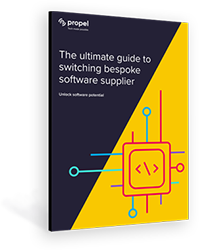The ultimate tech-investment checklist
The importance of investing in business technology is a no-brainer when it comes to establishing digital resilience. With strong tech, a business can streamline processes, improve efficiency, remain secure, and achieve its growth ambitions.
However, it’s also critical a business is 100% clear on its investment rationale without getting caught up in new technology hype. What benefits will it bring, what problem is it solving, and what new challenges is it likely to create - because new tech solutions will ALWAYS bring pros and cons.
Tech FOMO can underpin bad decisions. Just because your competitors are using a certain new system, it doesn’t mean it’s right for you. Here are seven good questions to ask before you spend a single penny.
1. Has the wider business been consulted?
Not all people within a business are technically minded, yet most are expected to use it in their day-to-day jobs. Before IT decision-makers go ahead and commission an expensive and complex new build, it’s important that a steering group is put together that can represent the relevant teams and units throughout the business to have their say on their challenges, capabilities and needs to inform the outcome. It may slow things down and even throw out undesirable challenges, but may well save a lot of wasted time and money further down the line.
2. Is new really necessary?
Tech investment should improve user experience for customers and employees. Sometimes a complete overhaul is the absolute right answer - but sometimes it’s not. Before you throw the baby out with the bathwater, it’s always worth considering the bigger picture. Many systems can be improved without starting from scratch, which not only cuts down on initial outlay but also the time and money it costs to re-skill staff and deal with teething problems. Work closely with your software developers to review legacy systems and don’t dismiss the prospect of upgrades and consolidating technologies.
3. Are buy or build the only two options?
A company's legacy system often creates frustrations in some areas but functions perfectly well in others. A hybrid approach to software development and maintenance can harness new innovation where needed, whilst enhancing the best bits of existing systems, to give the best of both worlds. The best way to achieve this is by working with a trusted partner who can provide a flexible, unbiased approach to solving problems.
4. Are we in a tech comfort zone?
Most companies have a ‘comfort zone’ when it comes to vendors, technologies and partners which can be dangerous when it comes to making informed decisions. IT and business leaders must make it their business to broaden their horizons and explore uncharted territory to make sure they’re using the absolute right platforms for their specific requirements.
Take the time to connect with third-party experts across the board to gain clarity on the breadth of tech opportunities out there before budgets are allocated.
5. How can my business better use data?
Collecting and using data from different sources can inform better strategic business decisions and improve business performance. Businesses can gain insights into all sorts of things, from market trends, customer behavior and competitor activity, to internal operations - the trick is how to use this intelligence effectively.
Software developers who have the ability to bring data analytics into their process can take unique data and use it to enhance user experience, increase efficiency and productivity, and build products that are tailored to fulfill the specific needs of the business.
6. Do I need proof of concept?
Yes. This must be seen as due diligence for any tech investment, however exciting and failsafe it may seem. A proof of concept puts an idea through its paces by determining if the product can be built effectively in the real world, what technologies should be used, whether the outcome is likely to be adopted by its intended audience and whether it can stand the test of time. If the PoC process throws doubt on any of these elements, it's back to the drawing board.
7. When does the testing process start?
At the very beginning. Whether it’s new hardware or software, a tester will take a different view of developers and often spot potential problems before they arise.
Speak to Propel Tech. Experts in technology and business, our approachable team is always on hand to offer advice and answer questions.
eBook
Make successful provider migrations a possibility. Download our essential free guide.
Find out more
Your partners in possibilities
As experts across existing and new technologies, we don’t simply solve software problems, we find solutions that help manage change so that your business thrives and grows.
We’re eager to hear about your project goals and turn them into reality. Get a free consultation to make tech possible.
Brief us




